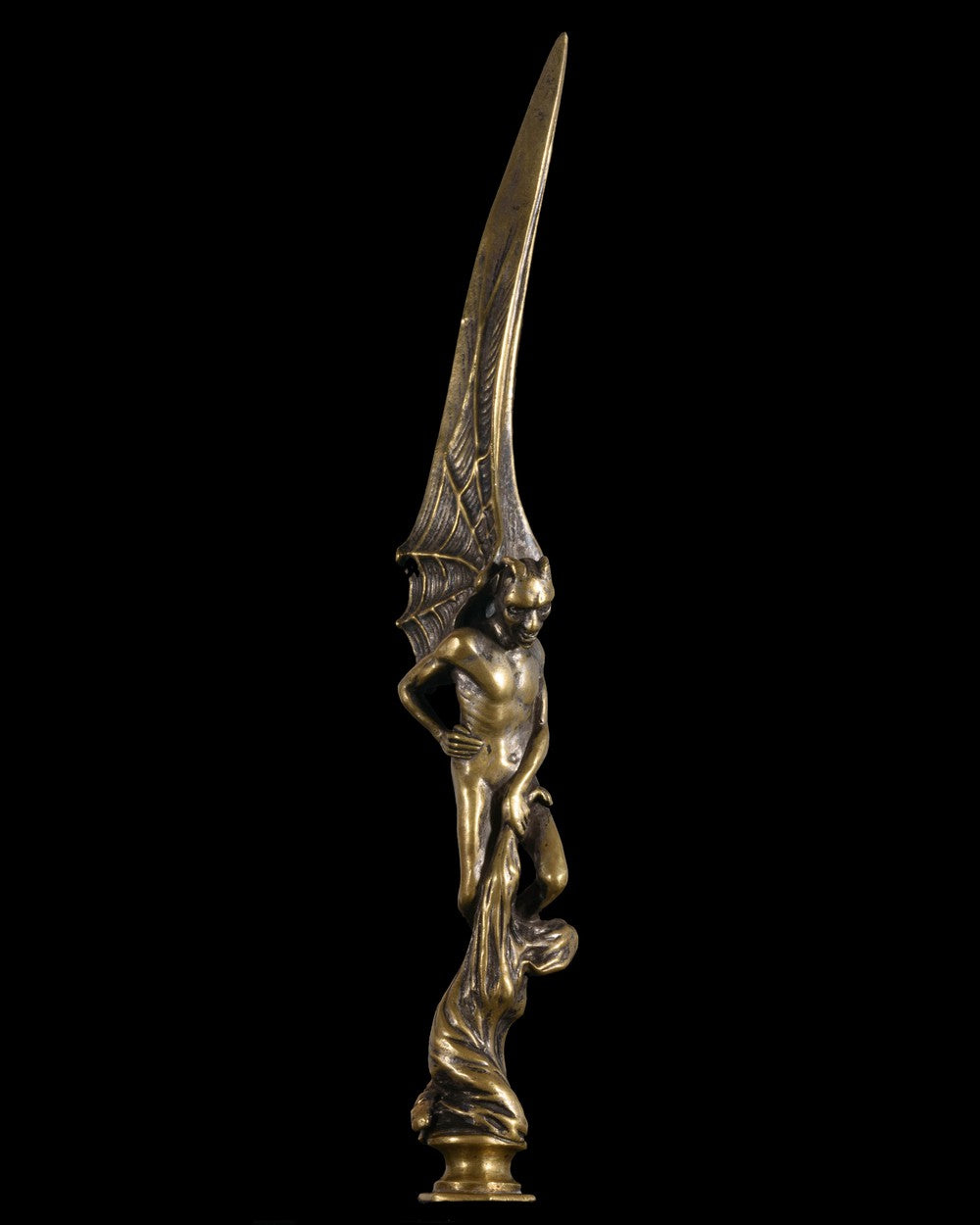Our prices are in euros, the prices converted in dollars or other currencies can vary according to the rate.
Free Worldwide Shipping – Secure and Protected Delivery
ref: #RK00-456Couldn't load pickup availability
This bronze letter opener, designed in the style of Jean-Jacques Feuchère, a renowned 19th-century sculptor, is both a functional and artistic piece, reflecting the appeal of the Gothic Revival and the dark imagery of the period. The Gothic Revival decor, characterized by its intricate forms and motifs inspired by medieval architecture, evokes an atmosphere of mystery and terror, themes often associated with the devil. Feuchère, famous for his depictions of the devil, marked his era with works that explored the duality of man, torn between good and evil, light and shadow.
The devil, the central figure of this letter opener, stands imposing and menacing over a soul wrapped in a shroud, a powerful symbol of death and damnation. The presence of the soul, reduced to impotence under the domination of the demon, underlines the influence of the devil on human destinies, a common vision in 19th-century art. This theme resonates with the growing interest of the period in occult and macabre subjects, often used to express collective anxieties in the face of social upheavals and new scientific discoveries.
The devil's wings, carved with remarkable meticulousness, are not simply decorative elements: they form the blade of the letter opener, thus combining functionality with aesthetics. This fusion between the utilitarian object and mythical imagery gives this piece a strong symbolic dimension. The wings, traditionally associated with freedom and elevation, here become cutting instruments, perhaps representing the way in which the devil severs the links between souls and salvation.
This letter opener, as a seal, also has another meaning: the seal, often associated with authority and official signature, here symbolizes the power of the devil over life and death, or over the pacts sealed with him. In an era where the art of the seal was a means of affirming identity and authority, the association with the devil reinforces the idea of a Faustian pact or bargain, a theme omnipresent in Romantic literature.
This work, through its Gothic influence and its representation of the devil, embodies a fascination with evil and decadence that ran through 19th century society. Both an object of contemplation and a tool of everyday life, it bears witness to the artistic genius of its time and the importance of the devil as a cultural and symbolic figure in decorative art.
The seal can easily be erased and engraved by a good engraver.
PERIOD : 19th century
DIMENSIONS : 24cm
SIZE : 9.5"
In the 19th century, the devil aroused intense fascination, reflecting the social, religious and philosophical upheavals of the time. With the rise of Romanticism, authors such as Goethe in Faust or Baudelaire in The Flowers of Evil explored the figure of the devil to question the notions of freedom, revolt and transgression. The devil became a symbol of resistance against moral and religious norms, embodying the desire for individual emancipation. At the same time, the rise of occultism and esotericism reflected a rejection of pure reason and a quest for mystery, reinforcing interest in dark forces. In literature, painting or decorative arts, the devil appears as an ambivalent figure, both a tempter and a mirror of modern existential anxieties. This fascination reveals the tensions between tradition and modernity, between science and faith, and the desire to explore the dark areas of the human soul.



